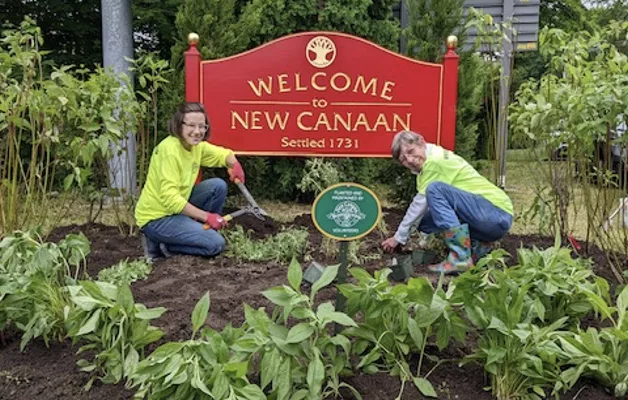In regions where debates over new multi-unit developments, like affordable housing under Connecticut’s 8-30g or NIMBY sentiments tend to sow discord, towns might be missing out on development opportunities that could empower local control and provide a much-needed economic boost.
Too often, legal battles over affordable housing and NIMBY concerns result in the state taking control of development decisions. By collaborating to address the demand for senior housing, deciding on suitable locations and investing in infrastructure, local communities can retain local control while fostering economic growth and enriching social interactions across generations.
The current growth of the population aged 65 and older, driven by the large Baby Boomer generation—those born between 1946 and 1964—is unprecedented. For some communities this over-65 population will begin to exceed the number of children in school, with the potential to, if developed, greatly impact local economies.
Towns actively competing to attract and support their senior populations are experiencing financial and social benefits, contrasting with those that neglect this demographic.
Boost to Local Economy: Seniors have disposable income from incoming federal dollars, through social security, pensions, investments and Medicare – each an economic multiplier. Seniors are often well-funded, spending money on goods and services in businesses that include retail stores, restaurants, and recreational facilities, thereby increasing local tax revenues that can offset continued property tax hikes. This boost in consumer spending tends to stimulate economic growth and create job opportunities.
Real Estate Market Growth: Conversely, a lack of senior friendly housing alternatives leads to a shortage of available houses on the market, stifling in-migration, and outside investments. For the majority of seniors who want to remain in the town they built, including paying town taxes for decades, they cannot find appropriately designed active adult housing alternatives in their hometown. Without alternatives, seniors will too often remain in their homes, thereby suppressing available housing inventory, but also add to potential healthcare risks. Remaining isolated at home has been connected to increased depression, over self-medication, and other healthcare pitfalls. This increased demand could lead to a healthy turnover in the real estate market, and potential opportunities for real estate developers and investors outside of 8-30g.
Volunteerism and Community Engagement: Seniors have valuable skills, knowledge, higher philanthropic tendencies and life experiences to contribute to the community through volunteer work, mentoring programs, and civic engagement. Their contributions enhance community programs and improve overall quality of life for residents.
Wisdom and Expertise: Seniors bring a wealth of knowledge, experience, and wisdom accumulated over a lifetime, which they can share with younger generations and contribute to community decision-making, problem-solving, and innovation. Seniors serve as custodians of local history and cultural heritage, preserving memories that enrich the fabric of community identity and continuity.
Increased Tax Revenue: Seniors pay disproportionately more property taxes and other local taxes generated from their spending, property ownership, and economic activity. This additional tax revenue provides funding for essential services, infrastructure improvements, and community development projects.
Expansion of Senior-Focused Businesses: With a growing senior population, there will be an increased demand for alternative businesses and services catering to seniors’ needs and preferences. This can include off-peak train activity, increased day time restaurant and retail traffic, and financial planning services tailored to retirement needs.
Your town’s seniors have built the communities that we now enjoy: From parks, recreational facilities and school systems, to sustained housing prices, our town’s seniors paid in advance for the many services that we so often take for granted. Too often, instead of the level of respect and appreciation deserved, agism becomes commonplace.
In the corridors of power and amidst the whispers of the town square, a narrative of hope and prosperity can unfold—one that celebrates the invaluable contributions of our esteemed seniors, while also heralding a new era of economic resurgence and social harmony. For too long, the discourse has been dominated by the contentious debates over affordable housing and zoning regulations, overshadowing the true catalyst of progress—the unparalleled potential of our aging population.
Picture, if you will, our bustling streets adorned with the laughter of children and the gentle footsteps of elders—a symphony of generations united in purpose and bound by the timeless bonds of community. Here, amidst the bustling marketplace and quaint cafes, the wisdom of the ages mingles with the vibrant energy of youth, giving rise to a tapestry of innovation and creativity that knows no bounds.
For in the end, it is not the wealth or power that defines us, but rather the legacy of love and compassion that we leave behind for future generations to cherish and uphold.
We are hopeful that a different perspective will create a sense of urgency and focus for our local towns. Those that do will have the financial and social advantage.
Russell R. Barksdale, Jr., PHD, MPA/MHA, FACHE President and CEO Waveny LifeCare Network



